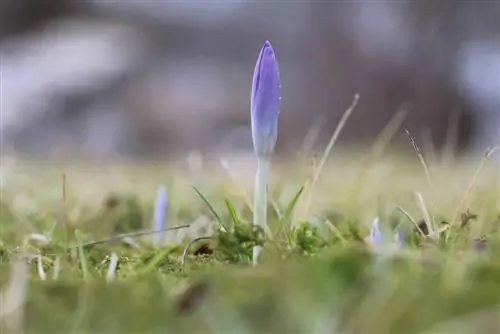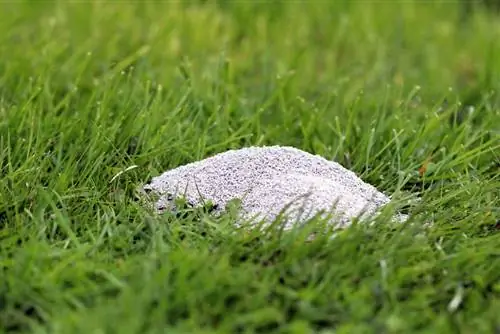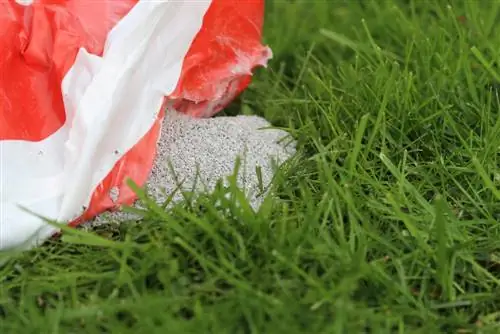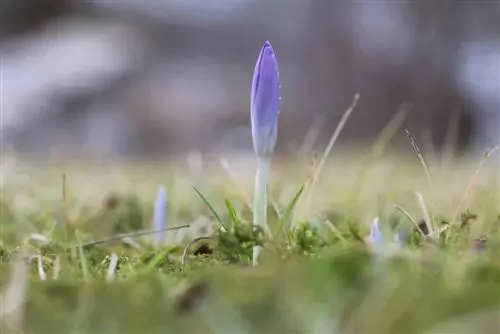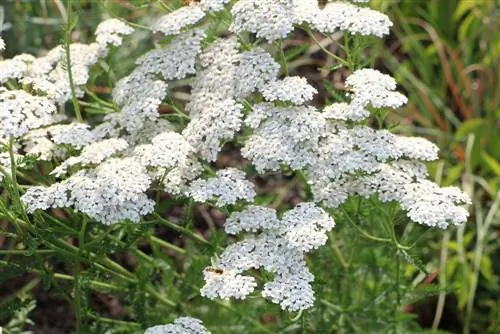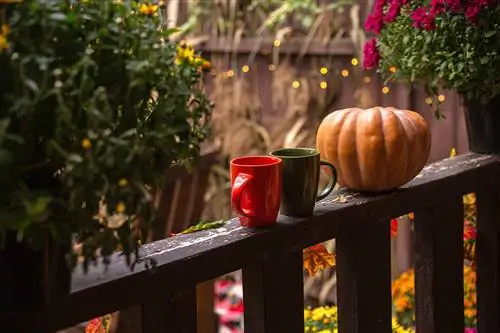- Author admin [email protected].
- Public 2023-12-17 03:39.
- Last modified 2025-01-24 12:45.
They are an exciting phenomenon in the autumn garden. Wherever the magnificent autumn crocus or the saffron crocus unfold their magical abundance of flowers, they always attract astonished looks. Crocuses are generally considered to be the classic spring flowers. The following lines are aimed at hobby gardeners who are interested in cultivating these garden-historical rarities. Get to know all the essential aspects for skilful care of the busy autumn bloomers in the rock garden, bed and pot.
Profile
- Plant family Iridaceae
- Genus Crocuses (Crocus)
- Species: Magnificent autumn crocus (Crocus speciosus) and saffron crocus (Crocus sativus)
- Bulb flowers with a height of 7 to 15 centimeters
- Flowering period from September to October/November
- Flower colors: white, blue or light purple, each with a yellowish throat
- Hardy and wintergreen
The orange stigmas of the saffron crocus have made a name for themselves worldwide as one of the most expensive spices. However, private cultivation to obtain saffron is not worthwhile because a large number of flowers are required, the harvest is very laborious and requires complex fermentation.
Care and location
In the successful care of crocuses in autumn, the location plays a key role. All other aspects fall into place behind it. These conditions should be offered to the magnificent autumn crocus and the saffron crocus:
- Sunny to semi-shady location
- Nutritious, well-drained soil
- Rich in humus and slightly sandy
Watering is usually not necessary as the autumn soil is sufficiently moist. The flowers are grateful for a nutritious layer of mulch, for example made from sifted compost or rotted horse manure. However, explicit mineral or organic fertilization is not necessary in the bed. In the lawn, crocuses automatically receive a dose of nutrients through lawn fertilization. Cultivated in a bucket or flower box, it is always watered a little when the substrate surface has dried. There is no need to add additional nutrients if the tubers are transplanted into fresh substrate every year. Otherwise, administer diluted liquid fertilizer, guano sticks, liquid compost or worm tea every 4 weeks.
After flowering
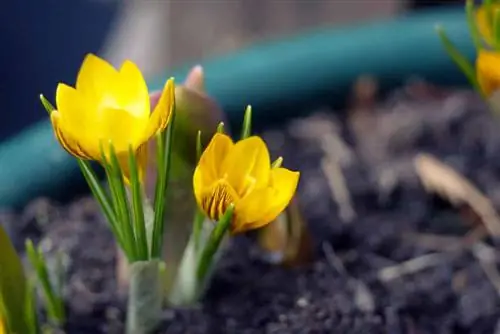
All the crocuses will have bloomed by November at the latest. However, the green foliage remains on the fall flowers throughout the winter. It is not until May that the onions begin to pull in their leaves. Only when they have completely dried out are the above-ground parts of the plant cut off close to the ground. In this way, the survival organ has enough time to use all remaining nutrients to form energy reserves. The flower bulbs can now be removed from the ground to make room for summer flowers. In this case, the crocuses spend the waiting period until autumn in a cool, dark and dry storage area. Of course, there is nothing wrong with leaving the magnificent autumn crocus and saffron crocus in place. For the flowers in the lawn, this means that prudent hobby gardeners should spare them from mowing until the wilting is complete.
Tip:
If self-sowing of crocuses is not desired, the withered flowers are cut off immediately so that no capsule fruits with seeds form.
Propagate
The crocus tuber itself makes the greatest contribution to breeding because it develops a large number of daughter bulbs. These are fully formed and provide the ideal propagation material. Here's how to do it:
- Cut off the withered leaves
- Getting the mother bulb out of the ground
- Cut off the daughter bulbs with a sharp knife
Until the planting season begins in late summer, keep the onions in a cool, dark basement. In this way you prevent premature sprouting.
Plants
August is the optimal planting date for the magnificent autumn crocus and the saffron crocus. Properly planting the flower bulbs in the ground does not require extensive experience:
- Dig up the soil to a depth of 20 centimeters at the selected location
- Carefully remove roots, stones and weeds
- Depending on the nature of the soil, incorporate compost, sand, peat or potting soil
- Dig planting holes with a depth of 10-15 centimeters
- Place the onions in small groups
- The tubers should not touch each other if possible
Finally, cover the crocuses with soil, press down and water. If you have planned for the crocuses to live in a pot or flower box in autumn, planting them is similar. The substrate used is commercially available potting soil, which is mixed with sand, especially for the cultivation of saffron crocuses. Drainage at the bottom of the vessel above the water outlet is of outstanding importance. Spread inorganic material here, such as pebbles, grit or pottery shards. Before the substrate is filled in, a water- and air-permeable fleece ensures that soil crumbs do not block the drainage.
Protection from voles
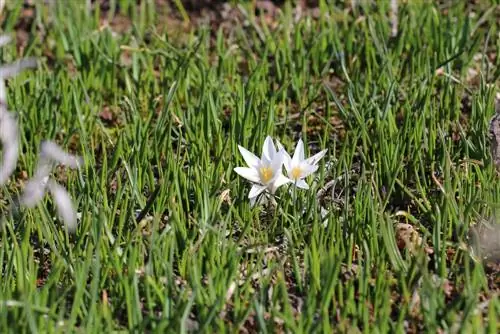
The crunchy, juicy flower bulbs of crocuses are one of the favorite foods of voles. While the large-scale control of these pests in the garden proves to be quite time-consuming, targeted protection during planting is comparatively uncomplicated. Special vole baskets are available from specialist retailers. With a little craftsmanship, you can construct the protective basket yourself from fine-meshed rectangular wire. A lid is unnecessary because voles cannot come to the surface. The basket goes into the ground in front of the crocus tubers. How to do it right:
- Dig a planting hole 15-20 centimeters deep
- Insert the vole basket
- Cover the ground with a 2-3 centimeter layer of sand
- Place the crocus bulbs in a small tuff
The excavated material is now filled in, pressed and watered. Ideally, you should mark the planting site so that it is not accidentally dug up in the fall.
Beautiful planting partners
Would you like other plant neighbors in addition to the crocuses for even more variety in appearance? Then the following autumn bloomers are recommended for the rock garden, the bed, the lawn and in the flower box:
- Gold crocus (Sternbergia lutea): not a real crocus, but just as enchantingly beautiful
- Creeping mountain savory (Satureja spicigera)
- Dwarf mountain savory (Satureja montana ssp. illyrica)
- Red sand thyme (Thymus serpyllum 'Coccineus')
From a design point of view, the autumn crocus (Colchicum autumnale) is considered the perfect complement to crocuses in autumn. Its pale purple flowers look very similar to crocus flowers. Unfortunately, this pretty flower is very poisonous, so it is not recommended if children or pets are around it.
Conclusion
Blooming crocuses in autumn create a sensation in the rock garden, lawn, bed and flower box. From September to November the colorful flowers shine and attract astonished looks. Above all, the magnificent autumn crocus and the saffron crocus are considered the ideal candidates for decorating the autumn garden. Planted in the appropriate location, the care is hardly worth mentioning. Under normal conditions, neither watering nor fertilization is necessary. To ensure that the flower bulbs remain vital for several years, the timing of pruning is important. Anyone who is patient until all parts of the plant are completely absorbed will be rewarded with the magnificent flowers next autumn.

